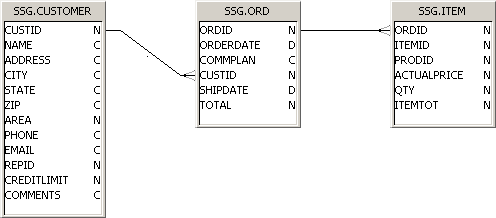This is the first of several posts that will review my presentation “Universe Models For Recursive Data” which was originally presented at the 2009 GBN conference, then at the North Texas / Oklahoma ASUG chapter meeting, and finally at the Mastering BusinessObjects conference in Melbourne. After presenting it three times it seemed like an appropriate time to (finally) get started writing up the blog posts. As with my other presentations there is a PDF file that can be downloaded from my conference presentations page.
This post will cover slides 6 through 13 as a basic introduction of recursive data and challenges presented to universe designers.
Defining Recursive Data
Sometimes there is confusion about the distinction between hierarchical and recursive data. Hierarchical data does not present a big challenge for BusinessObjects. It can be something related to time (Year, Quarter, Month, Day), geography (Country, Region, State, City), or something more specific like an accounting structure (Business Unit, Account, Sub-Account). What makes this hierarchical structure work easily is that each element is stored in a different place. It could be in a different column in the same table (flattened) or even in different tables (snowflake). As long as I can drill from one column to another in the hierarchy everything works fine.
Self-referencing or recursive data may initially look like a hierarchy. The key difference is that all of the elements are stored in the same place. There are keys that relate one row in a table back to a different row in the same table. That’s how recursive data is different from hierarchical data.
Why is recursion is a problem for BusinessObjects? The language used “behind the curtain” is SQL, and SQL does not natively support recursion. Some database vendors offer extensions (for example the CONNECT BY PRIOR structure in Oracle) but these are not used by BusinessObjects.
How common is recursive data? It is certainly not unusual. Consider any of the following:
- Company organizational structure
Object levels: President – Vice President – Director
Object type: Person
- Inventory BOM (Bill of Materials)
Object levels: Product – Assembly – Sub-Assembly – Component
Object type: Inventory item
- Project Management
Object levels: Project – Task – Sub-Task
Object type: Project entry
- Multi-Level Marketing (MLM)
Object levels: Founder – Recruit – Recruit Level 2
Object type: Person
In each of the above examples the type of object (or node) type is the same at any level. For example, a company organization chart is made up of people. Some people are at different levels, and there are therefore relationships from one person to another. In order to show all of the relationships from the top of the company to the bottom (or the bottom to the top) I have to keep going back to the same table. That is recursion.
Because it’s easy to think about a company organizational structure I used that example for the rest of the presentation.
Note: The Motors database is used in the standard Universe Designer training course and will not be presented in its entirety in the download package for this presentation for copyright reasons. However, I will be providing the standard HR table and all of the modified versions used in this presentation. Continue reading “Universe Models For Recursive Data Part I: Introduction”

